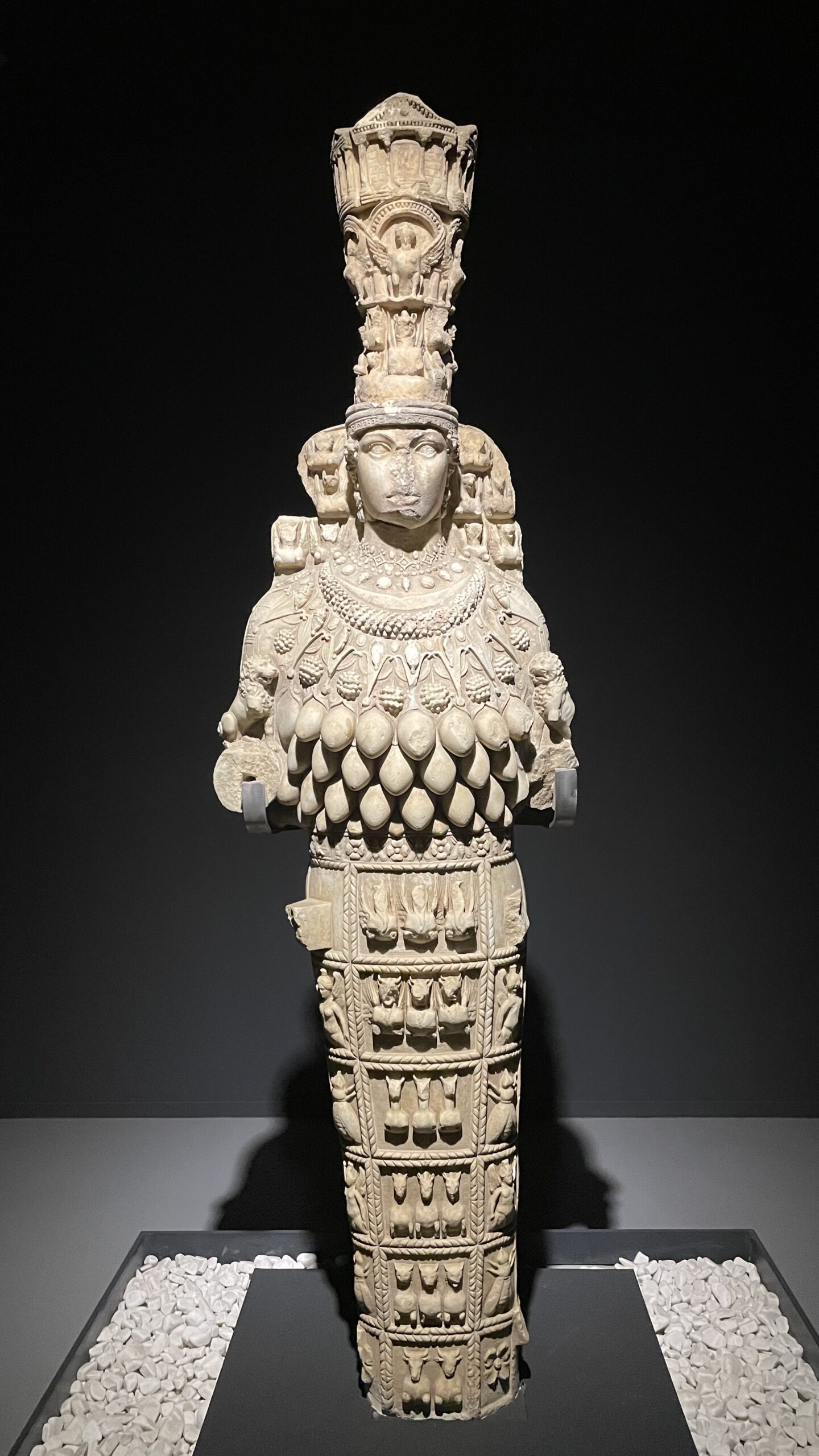
Two cult statues of Artemis Ephesia unearthed by Miltner in 1956 during his excavations of the “Prytaneion”: the famous “Beautiful Artemis” (right), found carefully buried in a side room of the “Prytaneion”; the “Great Artemis” (left) toppled over in the courtyard (where it once stood) perhaps by an earthquake or knocked over by Christians. These cult statues have been dated from the reign of Trajan (Great Artemis) to the Hadrianic–early Antonine (Beautiful Artemis). Other two statues, “the small Artemis” and a copy this last statue were excavated in the same area. All four statues probably were set up in the courtyard and hall of the “Prytaneion”. The specific type of the so-called “Great Artemis” can be traced back to representations of the goddess on coins and pottery stamps dated to the second century B.C. but ultimately may have been modeled on the seventh-century BC wooden cult image of the goddess that was housed in the temple of Artemis. Artemis’s role as protector of the city is signified by the three-tiered headgear, or polos, the goddess wears in the second-century AD statue (even if the polos itself is an older symbol of Phrygian female divinity). On the topmost tier are representations of temples, including the Artemision. Scholars continue to argue over the question of whether the oval pendants that hang from Artemis’s chest represent the scrota of bulls, rows of the Hittite leather bag known as “kursa,” hilltops, or amber pendants that were attached to the original wooden statue of the goddess in the Artemision. If the pendants are scrota, they might be a reference to sacrifices of bulls that took place during the celebrations of the mysteries. The Hittite leather bag would be a symbol of fecundity, while rows of hilltops might signify Artemis’s role as a mountain goddess.
Author: Roman copy of Greek Original | Date: 1st Century AD

